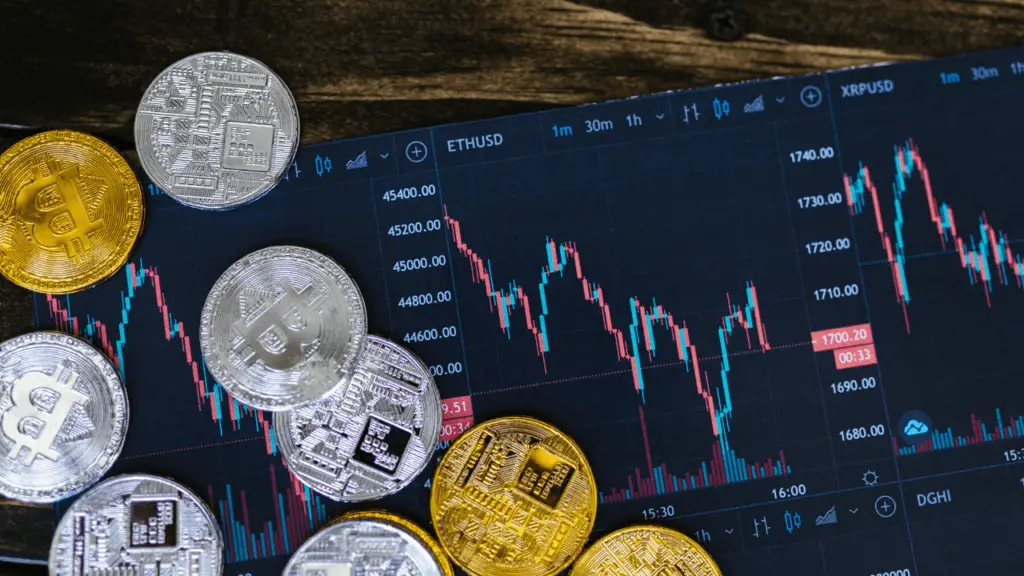The collapse of FTX and Alameda research has left crypto holders wondering what other exchanges might be doing with their customer’s coins and tokens behind the scenes. The call for transparency by the crypto community has been answered by most major cryptocurrency exchanges. Which have published proofs of their crypto reserves over the last few weeks. In this article, I’m going to explain what proof of reserves means, scrutinize the crypto reserves of some of these exchanges and examine whether decentralized exchanges will take over as a result.
Regulations needs to be in order for Crypto
FTX shenanigans have inevitably led to questions over the reliability and trustworthiness of other exchanges, and rightly so. FTX secretly sent billions of dollars of its uses cryptocurrency to prop up its sister trading firm Alameda research. This is why FTX couldn’t process all the crypto withdrawal requests coming from its users. Ultimately, the exchange had to file for bankruptcy.
Oddly enough, it was Binance CEO ChengPeng Zhao, or CZ who proposed a solution to the crypto community’s collapsing trust. I say oddly because CZ tweeted that Binance would be dumping its FTT. Which is one of the catalysts that led to FTX and Alameda collapse on the 8th November. CZ tweeted quote, All crypto exchanges should do providing a proof of reserves like how banks run on fractional reserves. Crypto exchanges should start to do proof of reserves soon, full transparency.
How P.O.R.(proof of reserve) works?
So for those unfamiliar proof of reserves, or POR. It essentially involves taking a cryptographic snapshot of the coins and tokens held by a cryptocurrency exchange. Now it’s important to note that it is supposed to be done with the help of an independent third party or protocol. In this case, it looks like most cryptocurrency exchanges have been working with Blockchain analytics platform Nansen for their PRs.
Now, another thing that’s important to note is that POR is also supposed to include the liabilities of a cryptocurrency exchange. In this context, liabilities mean the coins and tokens an exchange is holding on behalf of its users. Obviously, these coins and tokens don’t technically count as an exchange’s assets.
Why is there a need for proof of reserves?
If you read about FTX’s bankruptcy filing, you’ll note that both FTX US nor FTX international didn’t count their user’s crypto as liabilities on their balance sheets. This basically made it look like both had enough crypto on hand to meet withdrawal demand when they really didn’t.
Now the only exchanges that have included liabilities in their proof of reserves so far have been Kraken. Which actually began doing POR back in February. Gate.io which uses the same accounting firm as Kraken Armanino. And OKX which apparently reported its own liabilities without an accounting firm. Funnily enough, Coinbase has not provided POR for assets or liabilities.
Coinbase CEO Emily Choi explained to the coin desk that this is because Coinbase is regularly audited as a publicly traded company so its balance sheet is already fully available. And before I go on, I will caution that even if an exchange has done therapy for both its assets and liabilities. There is no guarantee that your crypto is safe on that exchange.
This is simply because you never know for sure that individual or institution that crunched the numbers is being honest. The only way to guarantee the safety of your cryptocurrency is to keep your coins and tokens in your own personal non-custodial wallet. It is also the only way to guarantee your financial freedom because having millions in the bank means nothing if you don’t have the ability to spend that money when and how you want.
Seriously guys I can’t stress this enough.
Binance
Now the first POR I want to analyze comes from Binance which was of course after Kraken, the first exchange to provide POR. Binance led the charge for POR to further squeezes competitors. Then again, other exchanges probably wanted to do POR to increase user confidence.
Current reported aUM
In any case, the top assets on finances balance sheet are as follows. 31% USD stablecoin, 22% USDT stable coin, 13% BTC, just under 10% BNB, 8% ETH, and the remaining 16 or so percent in other cryptocurrencies. Which is a grand total $67 billion. And this would be amazing. If not for the fact that finance has yet to publish proof of liabilities specifically of user deposits.
With an estimated 30 million users, it’s very likely that financial liabilities are very large and lightly on par with his assets as with other exchanges that have revealed their liabilities. That said in a Twitter spaces discussion, CZ explained that Binance has no liabilities. This doesn’t make much sense given that the exchange obviously holds the coins and tokens of many of its users.
What you should be worried about
This is admittedly concerning but Binance should be publishing its liabilities soon. More about that later. In the interim, we’re likely to see no shortage of hit pieces. Such as this one from Bloomberg, which took issue with the fact that around 40% of Finance’s reserves are held in its own branded assets namely B USD and BNB. CZ called the article fake news and rightfully so to some extent. That’s because even though USD is branded as finance a stablecoin. It’s actually issued by Paxos, a heavily regulated stablecoin issuer.
Based in the United States, Paxos actually seems to be the most regulated stablecoin issuer. Which theoretically makes BUSD the safest stable coin. Finances holdings of USD T are more concerning that tether has already been under extreme scrutiny from the US regulators for years.
Given that Alameda’s research was the largest recipient of all the USDT ever issue. I suspect that this scrutiny will soon return and possibly with even more intensity. Don’t even get me started. About all the pending stable coin regulations either.
Crypto.com
Anyways, the second POR I want to analyze comes from crypto.com. Which was the second exchange to release its POR after Binance. If I recall correctly, crypto.com was planning on releasing its POR closer to the end of the month. However, they had to rushed to release an initial POR after questions arose about the exchange’s solvency.
These questions arose because of the announcement by crypto.com that it was pausing deposits and withdrawals of USDT and USDC on the Solana blockchain. What is strange is that this is exactly what Binance, OKX, and other exchanges did shortly afterward. Yet there were no concerns there.
Current reported aUM
In any case, the top assets on crypto.com balance sheet are as follows. 25% BTC 22%, USDC, 19%, 11% ETH, just under 4% USDT and around 18% in other cryptocurrencies grand total $3 billion. Note crypto.com claimed in its PR release that it has more crypto elsewhere as finance. Crypto.com has yet to publish proof of its liabilities. These liabilities are likely to be even larger than finances given the crypto.com claims to have over 50 million users.
This certainly begs the question of why there’s such a large difference between the assets held by finance and by crypto.com. The answer seems to be on chain shortly after crypto.com released it POR. It was found that the exchange transferred 320,000 ETH. Worth over $400 million to get in late October, which was returned a few days later.
Crypto.com CEO Chris Masaryk claimed the transfer was just a mistake. It’s safe to say that the crypto community wasn’t convinced. That’s because Chris had to hold an emergency meeting to clear up the confusion. Now I have yet to watch that ama but it seems it was enough to calm crypto.com holders. Since the exchanges, Chronos coin pumped shortly afterward.
What you should be worried about
When it comes to crypto.com actual assets its balance sheet is definitely a mixed bag. Having BTC as its largest holding is a bit risky given all the crypto market volatility. Having almost all your stablecoin holdings in circles USDC is likewise wise in my opinion.
Now not surprisingly, the news that crypto.com holds a fifth of its asset reserves in SHIBA news shit token made the crypto headlines. That’s because SHIBA is a meme coin. Whose value is fundamentally reliant on retail speculation, which has been quickly sucked out of the crypto market as it crashes.
Chris explained that it so happens that last year DOGE and SHIBA with two extremely hot mean coins, and people bought a lot and they’re holding it. They didn’t sell it. We have no control over what you guys buy. You buy it. We will store it we will keep it safe.
Now, this actually makes a lot of sense, but it won’t be confirmed until crypto.com publishes its liabilities. If I understand correctly, this will be done in the next few weeks as the blog post announcing cryptO.com assets. Notes that it will confirm a quote full one-to-one reserve of all customer assets.
OKX
Anyhow, the third POR I want to analyze comes from OKX. Which you’ll recall included self-reported ones OKX release its proof of reserves just a few days ago, but what’s annoying is that the proof of reserves on its website doesn’t tell us all that much. That’s because it only gives us info about OKX is BTC and USDT holdings.
Current reported AUM
OKX claims to hold around 108,000 BTC against 105,000 BTC of user holdings. Which is 1,050,000 against 1,025,000. And for USD T It’s 3,060,000,000 against 3,016,000,000. The main takeaway is that OKX appears to have more crypto than the crypto that’s been deposited by its users.
Now, this is excellent. But again, it doesn’t include the other dozens of cryptocurrencies the exchange offers. It’s also not clear which accounting firm was involved. Unfortunately, Nansen doesn’t have any additional data either.
According to Nansen, the top assets on OKX balance sheet are as follows almost 50% USDT, 25% BTC, 20% ETH, 5% USDC and just a fraction of a percentage point for all the other cryptocurrencies the exchange offers. Okay, it says the blog post announcing its proof of reserves notes that it will publish asset and liability information about the other cryptocurrencies it holds soon.
What you should be worried about
The only reason OKX don’t offer the self-audit feature already is that most of the info that’s been released so far is the wallet addresses not cryptographic proofs of the reserve. Oh, and in case you’re wondering. The grand total of OKX crypto holdings is around $6 billion with around 20 million users. It sounds OKX is well capitalized. But as with all the other exchanges so far, the devil is truly in the detail.
Although holding most of your reserves in stable coins is safe. It’s a lot less safe when almost all the stablecoin reserves are in one specifically tethers USDT as I mentioned earlier tether is facing its fair share of regulatory scrutiny from the United States and other countries.
That is a bit risky, in my opinion. Even so, OKX is incomplete reserves, paints a fairly promising picture. The remaining 50% is in BTC and USTC. And all three are pristine collateral by crypto standards. Let’s just hope that OKX doesn’t reveal that it’s holding a massive chunk of its reserves in some meme coin, later down the line.
Kucoin
The fourth and final POR I want to analyze comes from Kucoin which released all his wallet addresses earlier this month. And is working on a cryptographic PLR with a third-party auditor, the blog post and that’s in Kucoins wallets. Note that the cryptographic POR will be published in early December.
Current reported AUM
In any case, the top assets on coo coins balance sheet are as follows 32% in USD t just under 18% In KCS 11% In BTC around 8% at around 7% in USDC, and 24% in everything else grand total of $2.5 billion of assets to back whatever liabilities are coming from coo coins 20 million users, like OKX and crypto.com, Kucoin has almost all of its stablecoin eggs in one basket, in this case, USDT.
This seems to be the standard for most crypto exchanges that aren’t based in the United States and it underscores how much damage would be done to the crypto ecosystem if the tether is ever taken down.
What you should be worried about
If the exchange ever were to experience any issues KCS’s the price would plummet. In a worst-case scenario. This could wipe out almost 20% of Kucoins’ crypto reserves. Now the remainder of Kucoins reserves is interesting the expected barely a fifth in BTC and ETH, and almost a quarter in mid to small-cap altcoins. This makes sense because Kucoin is one of the most popular exchanges to go to for small-cap altcoins and the ones that list tend to be pretty good as well.
Now I should also note that Kucoins blog post about its wallet addresses also states that it has more reserves than it has reported so far. The fact that coo coin will be providing cryptographic POR also suggests that the exchange will be providing the liability side of its crypto balance sheet.
this is all well and good but I’ll reiterate that the only way to know for sure that your cryptocurrency is safe is to keep it in your own personal wallet. Only keep what you’re actively trading on exchanges. Otherwise, keep everything in our hot or cold wallet and don’t say I didn’t warn you.
Will DEXes take over?
So, this brings me to the big question: whether decentralized exchanges are destined to take over due to the transparency issues of centralized exchanges.
In short, yes, but it’s going to take quite some time for the Dex experience to beat the exchange experience.
Why Dex may take quite a while
For starters, there’s the trading experience, using a Dex is not nearly as easy as using exchange for crypto news. DExes also don’t provide nearly the same degree of flexibility to crypto experts. The good news is that progress is being made on both fronts by wallets like Phantom and Orderbook Dex is like GMX.
Why Dexes are great to invest in
The ability to swap between native cryptocurrencies, DEX effectively let you trade whatever cryptocurrency you want whereas most indexes only allow you to trade between tokens on a single blockchain.
This is not ideal, as some trades require multiple indexes and cross-chain bridges. The good news is that there are crypto projects like Thor chain which make it possible to swap cryptocurrencies natively between blockchains these technologies are still very much in their infancy, but I could see an order book based cross chain decks being built by the end of the next bull market.
And finally, there are the on and off ramps. The biggest advantage that Dexes have over indexes is arguably their ability to let users cash out into filthy feared. Being able to easily get your money in and out of crypto is of paramount importance, and it’s something that Dex is haven’t yet managed to do due to all the regulations evolving.
The way moving forward
The good news is that it should become easier to get your money in and an ounce of crypto once it becomes more widely held. Peer to Peer crypto marketplaces was and continue to be something associated with privacy-obsessed cypherpunks but they could become very common as crypto adoption increases.
I’m confident that taxes will displace Exchanges in the coming years. I reckon this will be accelerated by crypto regulations which will only be enforceable against centralized elements of the crypto industry. The truth is that all centralized elements must be removed for this to be called crypto. Take a second to consider that it’s the centralized entities that have historically caused and continue to cause all the issues in the crypto industry. It’s part of the growing pains and it is in fact something that the crypto industry should eventually grow out of. Otherwise, we’ll end up with more of the same.
Changes need to be made
After all, what FTX and Alameda were doing is no different from what banks do today. The only difference are that banks get bailed out by the central banks when they lose all their client’s money speculating on risky assets with leverage. Crypto companies who do this just go under as they should.
Stronger crypto companies rise to replace them, however, until their flaws are found and they collapse too. And with each iteration, the crypto industry moves closer to its core values because that’s all that’s left. Greed and gains are gone. It will take time. But one day we will no longer have to trust we will simply verify.





